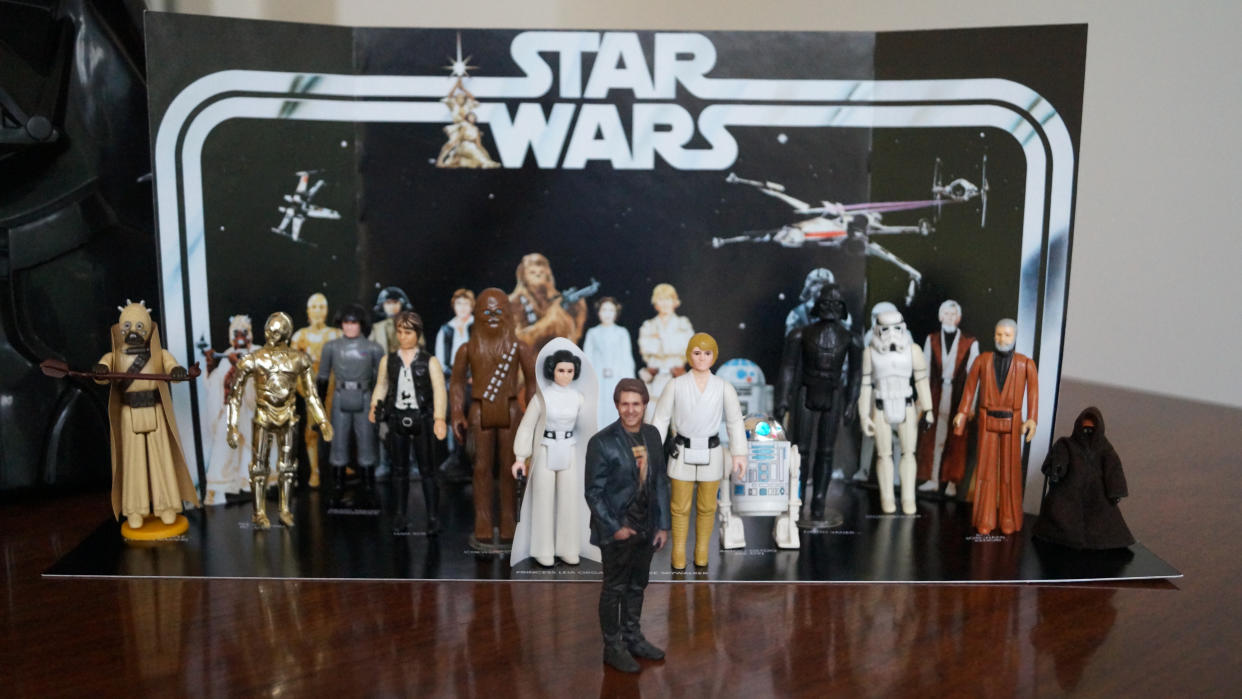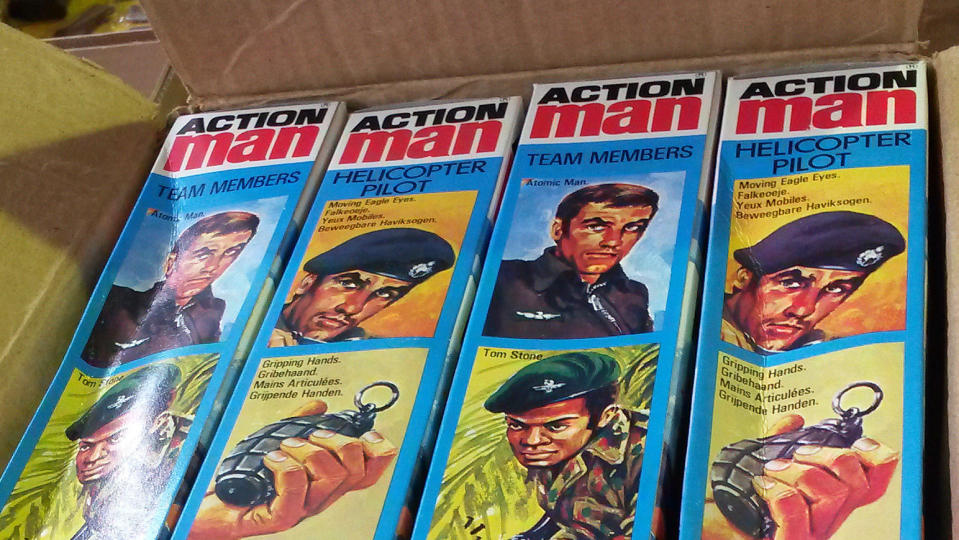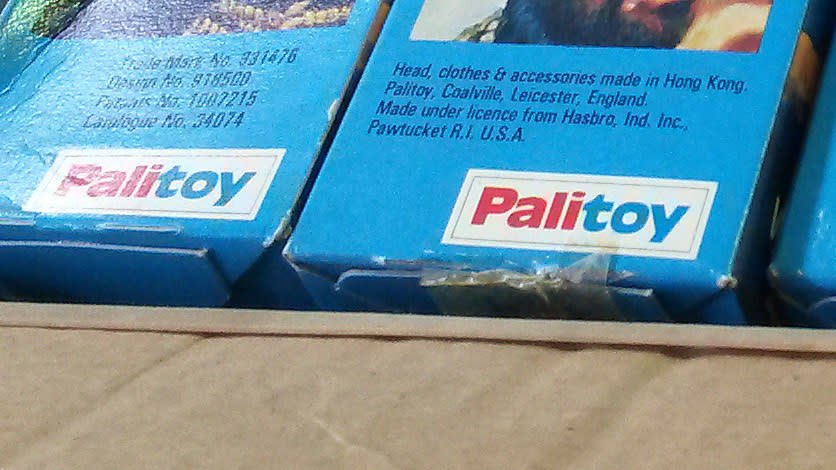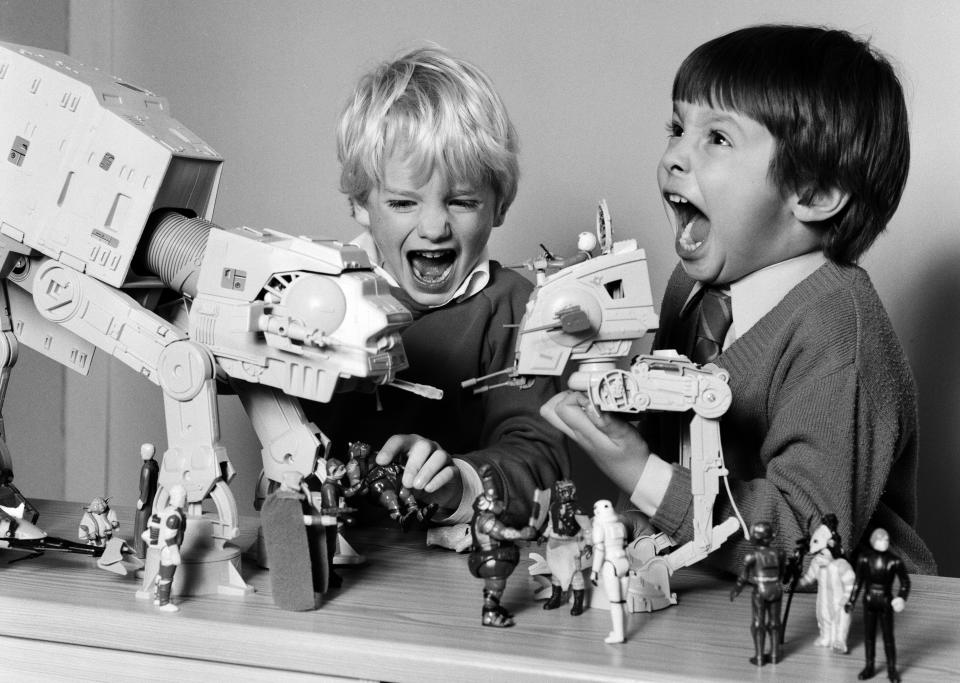How a British company built the 'Star Wars' toy empire

The Star Wars franchise would not be where it is today without its vast merchandising empire.
George Lucas famously turned down an extra $500,000 (£374,000) of directing fees in 1977 in order to retain the merchandising rights to his new creation. When Star Wars: A New Hope made $503m (£376m) and sparked a toy rush on an unprecedented scale, the 33-year-old bearded fella suddenly looked like a genius.
But less well documented, perhaps, is that part of the toy rush in question emanated from a company based in the former mining town of Coalville, Leicestershire. And it is that story which forms the bones of new BBC Four documentary Toy Empire: The British Force Behind Star Wars Toys, fronted by presenter David Whiteley.
Read more: Seriously ill Star Wars superfan gets to see film early
Whiteley previously fronted Star Wars doc The Galaxy Britain Built, which is set to air in a new, extended cut after Toy Empire as part of an evening of BBC Four entertainment based on the galaxy far, far away. He was born on 4 May, informally known as Star Wars Day, in A New Hope’s debut year of 1977. Whiteley says this coincidence caused Rogue One director Gareth Edwards to tell him he had “never met anybody with such a Star Wars birthday”.

He has a lifelong relationship with Star Wars and its toys, remembering his mother rushing to the shop to claim the last Millennium Falcon toy in stock and recalling how he watched Return of the Jedi in the cinema with his father in 1983, having watched the previous movies on VHS.
“I remember being in the third row and being absolutely terrified when the rancor ate the Gamorrean guard,” says Whiteley. “The noise that made echoed around the whole cinema.“
Read more: George Lucas cut best lightsaber fight from prequels
He adds: “Looking back, they should not have been U certificates. You had burning skeletons in A New Hope, people's throats being crushed. In Empire Strikes Back, you've got Han Solo being tortured with electricity. How on Earth were these passed at a U?”
Palitoy, based in Coalville, were riding high with Action Man and Tiny Tears in the 1970s and they were soon the focus for the British arm of the Star Wars toy operation. Toys made by the company are now among the most valuable available worldwide, with their rarity imposing what Whiteley calls a “Palitoy Tax” on prices for the collectables.

Whiteley says: “Palitoy would manufacture parts for the figures and the vehicles and then, in Coalville, assemble everything and put everything together. They were getting some moulds from the States and some tools from the States, but also having to redesign things as well.
“One of the most sought after playsets in the Palitoy world is the cardboard Death Star. In America, it was a big lump of plastic and they were a bigger market. They had to redesign something very cheaply in the UK. Now, remarkably, the cheap bit of cardboard goes for a lot of money because, being cardboard, a lot of them didn't last.”
Read more: Rare Star Wars memorabilia on display before auction
The ethos at Palitoy, Whiteley says, was very much one of “make do and mend” in which parts abandoned from particular toys as a result of cost restrictions would often find their way onto others.

Whiteley says: “Their story was very much in parallel with George Lucas' story. The trade weren't interested, the release date in the UK was many months later and missed Christmas. By the time they got the products out in the spring of '78, the toy shops were moving into summer toys, so they had paddling pools and beach balls and stuff instead of room for Star Wars toys. So it was very difficult for them to get things going.”
Vintage Star Wars toys are a real money-spinner for collectors, with a rare Boba Fett toy on sale at this year’s Star Wars Celebration event for an asking price of £280,000. A similar Boba Fett figure set the world record for a Star Wars toy earlier this year when it sold at auction for a mammoth £90,322.
So which toys should people be looking around in the loft for if they want to get a slice of that particular pie?
“Anything on a carded pack, still in a Palitoy packet is worth a lot of money,” says Whiteley. “We were filming at this auction and there were Palitoy figures in their boxes going for £2,000-£2,500. Toys are there to be played with, so you've got to scour very hard to find these things [in pristine condition]. A cardboard Death Star that had been played with, but was still in its box, went for £1,400.”

Palitoy, sadly, is no longer around and has not been able to capitalise on the latest bonanza of Star Wars merchandise inspired by Disney’s purchase of Lucasfilm and the subsequent new run of movies set within Lucas’ expansive universe.
“What's very sad is that actually, in 1985, Palitoy were doing really well,” says Whiteley. “They'd doubled their workforce on the assembly line and were very successful around the time of Return of the Jedi.
“Then '85 came and [parent company] General Mills decided to get out of the toy business. They sold off Palitoy and then it changed hands three times after that and, by 1994, that was it. It was all over.”
Read more: Axe from The Shining sells at auction for £170,000
But the Palitoy legacy lives on in the nostalgic value of its toys and in the attics of devotees like Whiteley, who says he probably still has his Millennium Falcon somewhere.
Toy Empire: The British Force Behind Star Wars Toys airs on 16 December on BBC Four.

 Yahoo Movies
Yahoo Movies 
